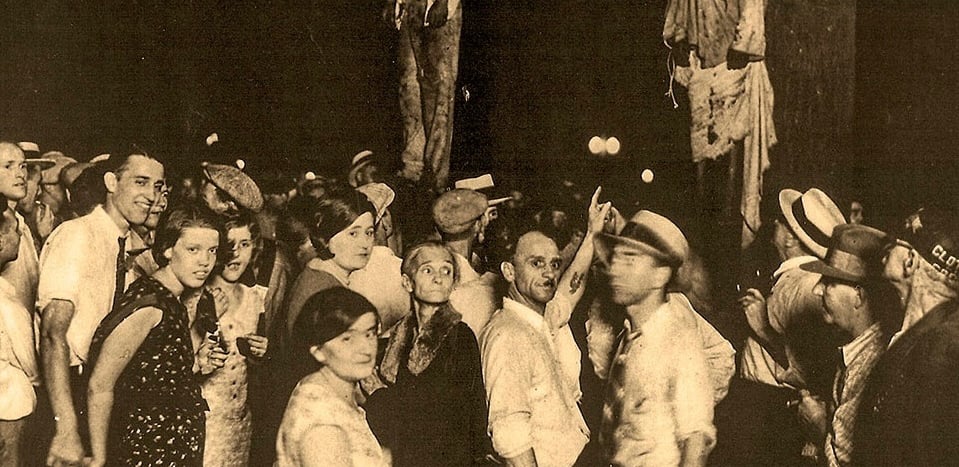Lynchings Ignored? A New Wave of Suspicious Hangings Across America
FEATURED ARTICLES
10/5/20253 min read


Lynchings Ignored?
A New Wave of Suspicious Hangings Across America
By Maurice Woodson
In recent years, a disturbing pattern of Black people being found hanging in public places has raised serious concerns across the United States. While authorities have frequently ruled these deaths as suicides, families, activists, and community leaders insist that there is something far more troubling at play. The echoes of America’s violent past reverberate through these cases, and the reluctance of officials to fully investigate only deepens suspicion.
For generations, the noose symbolized racial terror in America. Today, Black men, women, and even children are still being found hanging from trees, in parks, and in public spaces—deaths authorities often dismiss as suicides. Families and communities demand answers, fearing that modern lynchings are being ignored in plain sight.
The issue is not confined to adults. On November 15, 2024, in Charles County, Maryland, a seven-year-old Black boy was found hanging from a bathroom hook at school. He survived the incident but told adults that a young white student and his friend said, “I’m going to show you how it was done back in the day.” Rather than treating this with the severity such a statement demands, the school superintendent described the event as possible “horseplay” or bullying. For many, it was a chilling reminder that the mindset behind lynching is being passed down to another generation.
Civil rights attorney Jill Cohen has uncovered at least eight suspicious deaths of Black men and women in Mississippi since 2000, all hastily labeled as suicides without meaningful evidence or thorough investigation. This revelation points to a systemic failure to confront potential hate crimes with the seriousness they require.
The list of names and cases across the country is long and growing. In June 2025, twenty-one-year-old Adriana Suazo was found hanging in the woods of Milton, Massachusetts. That same year in Connecticut, Jasmine Wilkes, 34, and Denise Leary, 59, were both discovered dead in public parks. In Albany, New York, Earl Smith was found hanging from a tree. Days later, an unidentified Black man was found the same way in Oakland, California.
The deaths often come with conflicting reports, as in the case of Dennoriss Richardson in Sheffield, Alabama. Authorities declared his death a suicide, but an independent autopsy found no conclusive evidence to support that claim. Families are frequently left without answers, their grief compounded by doubt and distrust in the system.
The pandemic years also brought a wave of suspicious hangings that drew national attention. In June 2020, twenty-year-old Robert Fuller was found hanging from a tree in Palmdale, California, just a day after 27-year-old Dominique Alexander was discovered in Fort Tryon Park in New York. Both were labeled suicides, despite family objections. Malcolm Harsch, 38, was found hanging in Victorville, California, just weeks earlier. The cluster of cases fueled outrage, protests, and demands for independent investigations.
Other victims include Yolna “Yo Yo” Lubrin, found hanging in Orlando in September 2023, and 18-year-old Omari Bryant in Homerville, Georgia, whose death was ruled a suicide despite cameras at the scene being mysteriously disabled. In February 2024, 29-year-old Trevonte Jamal Shubert-Helton was found hanging from a tree in Georgia’s Swallow Creek. Later that year, Walmart employee Javion Magee was discovered with a rope around his neck in September. In July 2025, Samantha Turner’s body was found in a treeline behind a strip mall. In Putnam County, Georgia, in 2019, Carla Crumpton was found hanging from a tree. Most recently, in September 2025, Demartravion “Trey” Reed, Jade McKissic, and Antonio Atkins were all discovered hanging within weeks of each other.
Alongside these hangings, a disturbing number of Black people have gone missing under suspicious circumstances. Among them are Keeshae Jacombs of Richmond, Virginia; Terrence Woods Jr. in California; Unique Harris; Daniel Robertson, last seen in June 2021; Allahnia Lenoir, missing since July 2022 in Atlanta; and Lopaz Richardson, who disappeared in the Carolinas the same year. Adding to the mystery, multiple bodies have recently been pulled from rivers under unclear circumstances.
These cases, taken together, form a troubling pattern that recalls the terror of lynching in America’s past. The official narratives—suicides, accidents, or “horseplay”—often do not align with the details on the ground or the lived experiences of the families. The dismissive responses from law enforcement and institutions reinforce a sense that Black lives remain disposable in the eyes of the system.
The question is no longer whether these cases are isolated tragedies but what it means when so many Black men, women, and even children are found hanging in public spaces, their deaths brushed aside. The weight of history cannot be ignored. Communities demand the truth, accountability, and the assurance that these lives matter—not as statistics, not as dismissals, but as individuals whose safety and dignity should be protected. The haunting reality is that for many, the shadow of lynching never left—it simply changed its disguise.
For More Articles Read Our Monthly Magazine: https://issue.blackzonemagazine.com/october2025/
